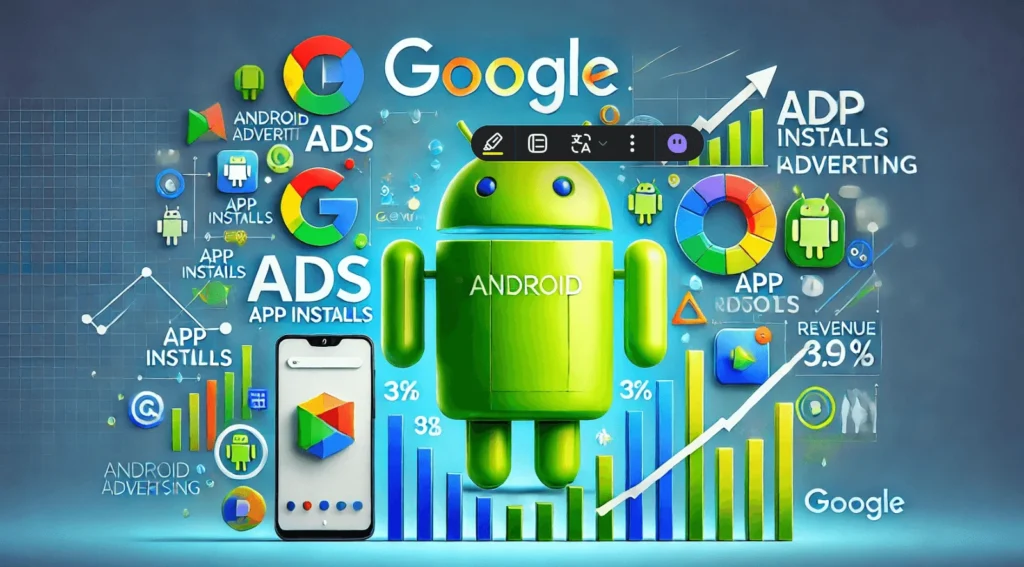
The latest Performance Index by AppsFlyer is the 17th edition, and the report shows changes in the mobility advertising environment, focusing on growth and diversification in sectors other than gaming and further optimization in ad placement. The report reclaims that with the improvement of 18 percent in both app install and ad spending year over year – non-gaming is fueling the market’s growth. For this, Google takes pole position for Android advertising, and Apple Search Ads (ASA) retains control over iOS advertising.
Key Highlights of the AppsFlyer Performance Index
- Growth in Non-Gaming App Categories
The report confirms that there is a shift towards non-gaming apps, 80 % top five media source app revealed increased investment and 60 % of the top 20 media source app too.- Casual gaming continues to expand, but hypercasual and mid-core gaming categories are in decline.
- It is recommended that marketers look more to the future in sectors outside of gaming but less to sectors within gaming.
- Shani Rosenfelder, Director of Content Strategy and Market Insights at AppsFlyer, commented:
“The difference between games and no games has never been felt as radical as it is now. Marketers need to focus on the rebounding non-gaming sector while carefully assessing gaming investments.”
Google Leads Android Advertising

Google Ads dominates Android non-gaming segments, leading in multiple metrics:
- Power and organic remarketing performance
- Revenue per user (RPU) in nearly all regions
- Growth in India and North America boosts Google’s dominance, especially in utility and lifestyle apps.
Meta ranks second globally but saw a drop in market share, with growth mainly in Eastern Europe and India. Xiaomi made a notable jump to third place in the Android power rankings, driven by a 22% increase in retention rates across various markets.
Google Ads maintained its leading position in the gaming category, except in hypercasual gaming. Improvements in campaign quality enhanced Google’s power ranking, resulting in a 12% surge in North American retention rates.
Apple Search Ads (ASA) Dominates iOS Ecosystem

On the iOS platform, Apple Search Ads (ASA) continues to lead:
- ASA ranks first in non-gaming power and volume categories, showing strong performance in North America and Western Europe.
- ASA also excelled in retention rates, helping marketers increase customer engagement.
ASA topped the Single Source of Truth (SSOT) index in the gaming sector, which integrates SKAdNetwork and traditional attribution data. Although it experienced minor declines in share of wallet, ASA’s high retention scores kept it ahead in all categories, except hypercasual.
Meta ranks second in the iOS utility segment, while AppLovin and Google Ads secured top three spots by enhancing retention scores.
Strategic Implications for Marketers
AppsFlyer’s report suggests that non-gaming apps are becoming increasingly essential to mobile ad strategies, with gaming trends showing greater variation. The index stresses the importance of optimizing ad spending to align with these shifting trends:
- Non-gaming investments are rising across the board, while mid-core and hypercasual gaming sectors are struggling.
- Retention rates are becoming a critical metric for ad success, reflected in both Android and iOS platforms.
Conclusion
The AppsFlyer Performance Index demonstrates that Google Ads leads the Android ecosystem, particularly in non-gaming apps, while Apple Search Ads maintains its stronghold on iOS. The growing emphasis on non-gaming sectors marks a key shift in the mobile advertising landscape. As the gaming industry evolves further and continues with strategic diversification, marketers will also have to learn how to evolve to the situation. The patterns identified by AppsFlyer suggest that businesses need to address some of the main issues, such as the proper allocation of ad spend and the enhancement of retention, which will secure long-term success in both the Android and iOS environments.
I believe marketers must adapt quickly to these changes to remain competitive. The report’s emphasis on non-gaming growth and retention rates as key metrics highlights the evolving mobile landscape. How will the rise of non-gaming apps impact mobile advertising strategies? Can Google maintain its Android dominance, or will competitors like Xiaomi and Meta close the gap? Will Apple Search Ads continue to lead iOS, or will alternative ad platforms emerge? Share your thoughts!

